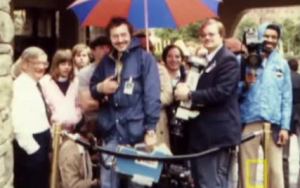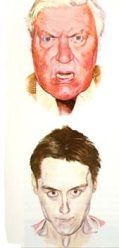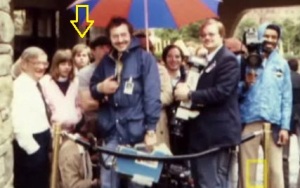Behavioral cues and situational awareness are two important concepts that I feel are really overlooked in the martial arts community. It’s not that the concepts aren’t mentioned, but more that the concepts are skimmed over and not given their due diligence. Typically, I hear things like “pay attention to your surroundings” and “look around” or “look for suspicious people.” These are great to say, but what exactly are we supposed to be looking for? What are we supposed to be paying attention to? What does a suspicious person look like? Maybe to some, a black teen wearing a hoodie or possibly a tatted up white male with a shaved head could be considered suspicious. The answers to these questions are all situational and can’t be answered without more information about the actions of the individual and the environment they are in.
Think about it like this, when you are driving, do you look for bad drivers to avoid? OR, while driving to your destination, do you observe bad driving along the way and avoid it? My point is, if you spend all your time looking for something that isn’t clearly defined, you will most likely miss it or worse, focus on the wrong things. The solution? Look at the environment and see what is normal (environmental standard). If there is something that doesn’t match the environment, it will stand out to you, and you should focus on whatever that is. What, if anything, stands out to you in this photo?
 The above photo was taken before President Reagan was shot by John Hinckley. If you look carefully, you can see him by his body language.
The above photo was taken before President Reagan was shot by John Hinckley. If you look carefully, you can see him by his body language.
As you can see, Hinckley does not match his environment. He is the only person who isn’t smiling for the photo. Hinckley isn’t smiling, because he is getting ready to attempt an assassination. During high stress situations, the body has physiological changes that can’t be controlled. In the context of the photo, you can see that the reporters are happy to be there for the event and are not stressed. Hinckley is stressed, and his mind is focused on the assassination attempt. This makes him unaware that he stands out in his environment.
Situational awareness should also be directed inwards, not just outwards. For example, there may be a time when it’s you that doesn’t match the environment; like walking into a biker bar wearing a Perry Ellis suit. Doing this is probably not the best idea for keeping a low profile or going unnoticed. In self-defense, one goal is to avoid sticking out.
We use situational awareness to spot vehicular behavioral cues while we defensively drive. Why wouldn’t we take the same preventive actions in day to day life to keep from being raped, mugged, robbed, or killed? I believe it is important to talk in detail about the different levels of awareness and what we should observe when “looking around” or “paying attention.” I have already written a post on situational awareness. This post is primarily about behavioral cues.
There are several behavioral cues or Pre-Attack indicators that we should look for. These cues are going to be presented by the attacker at the end of Phase 1 and the beginning of Phase 2. This isn’t a complete list, but it’s a good start.
Hands – Pay attention to their movements. Look for fidgeting hands, clenching fists, and/or attempting to hide their hands. These movements are due to the physiological changes in the body. Stress hormones cause our hands to shake and/or clench. Also, clenching is a sign of aggression or intimidation. When someone hides their hands, it’s to either mask the physiological symptoms or to hide a weapon. Neither reason is good. It should be noted that if you are in an altercation and the individual isn’t showing these symptoms, that individual is trained and/or experienced. Specifically look to which way the palm is facing. If the palm is being hidden, most likely there is something in their hand. Also, if the individual reaches behind his back with the palm facing behind them, they are probably grabbing a weapon. If the palm is facing to the front, they are probably taking something out of their back pocket.
Eyes – Are they assessing you or scanning the crowd? Are they using glances for communication? For example, labeling a target and/or execution command to a partner. Remember the video from my last post, where the attacker verified the target to his partner with a head nod? Peripheral vision is faster at detecting movement than focused vision, so look for a really hard stare. It will seem like they are looking through you. Sometimes you will hear this referred to as “the thousand yard stare.”

Body – How is the individual manipulating their body? Check if his feet are offset, like in a fighting stance, has moved to a flanking position, or hesitated in his response. Skin color can be used as an indicator too. Are they flush or pale? A flush individual typically means anger, which may turn into violence. On the other hand, if the individual is pale, attack is imminent. This typically means that the person is in “fight or flight” and the blood is being drawn from the extremities to the internal organs. Also, when the blood is pooled to the internal organs, the individual will seem really calm. Don’t mistake the calmness for something it’s not. This individual will attack ferociously.
Proximity – We all have personal boundaries and have set limits. Is this person getting into your personal space? Of course, this is going to be dependent on the environment. It’s not normal for someone to get into your space while you are at an ATM. Likewise, if you are on a crowded bus and all the seats are filled, some contact is expected. Attacks don’t happen the same way in reality as they do when we spar. Attacks don’t start with a bell, and assailants don’t close the distance to the middle of a ring to meet for a mutual exchange. Attackers get in close without being noticed and attack hard and fast.
The above is a list of physical Pre-Attack indicators. There are also charm tactics, I outlined a few in the Phase 2 Part 1 post. In the Create Doubt post we spoke about how we illicit behavioral cues in our actions too. Our body language plays a big part of if we are selected as a target for attack. Being able to identify charm tactics and behavioral cues while practicing good situational awareness will give you a hand up in preventing and deterring a violent encounter.
As you can see, the concepts from Create Doubt, Situational Awareness, and Attack Cycle build on each other. It’s important to realize that I’m scratching the surface in my posts and that these concepts can get complicated depending on the scenario that we may find ourselves in.


I did what you said and my eye went straight to Hinkley, although I didn’t know it was him until I read further.
Good stuff here.
LikeLike
Good perception, picking out Hinckley! I’m glad you enjoyed the post and thank you for your feedback! 🙂
LikeLike
Great post, although I kind of spoiled it for myself because I photoread it. In exchange for speed, I saw the solution for your image question during prereading. Damn it! Haha!
But anyway, great post man! It’s great because it’s practical. Palm direction, paleness, change in stance… nice!
Keep it up!
LikeLike
Practical is the only thing that matters or works, everything else is just fantasy. I’m glad you enjoyed this post. Thank you for reading and commenting!
LikeLike
Reblogged this on Every Day Carry Solutions and commented:
Here’s a great follow on to my last post regarding body language indications of violence – written by Chris @ Stay Safe Self-Defense
LikeLike
Reblogged this on The Defensive Training Group and commented:
Great tandem piece to EDC’s previous post.
LikeLike
Reblogged this on The Lynler Report.
LikeLike
Reblogged this on disturbeddeputy and commented:
Situational awareness!
LikeLike
Outstanding post!
LikeLiked by 1 person
Thank you, Robert. I actually just wrapping up preproduction for a video that goes into the finer details of this post.
LikeLike